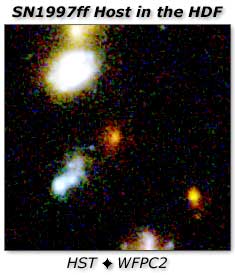10 billion light years away

American astronomers have discovered the supernova (a glowing star after it exploded) farthest from Earth. The star was discovered at a distance of about ten billion light years from Earth, thanks to photographs sent by the "Hubble" space telescope. A powerful telescope launched into space by the United States in 90.
The new discovery strengthens the explanation that the universe is expanding faster than before, due to the existence of mysterious black energy. This claim, which came up about three years ago, is based on dim and unusual light coming from distant supernovae.
The discovery of the supernova allows scientists to monitor the expansion of the universe, "just like a parent measures the development of his children using marks on the door frame", the scientists claim. According to them, if the universe had expanded more slowly, the new star should have been darker. "It was like discovering the Loch Ness monster on a photograph," the researchers described the discovery.
The explosion seen in the photographs actually took place eight billion years ago, when the universe was still "in its infancy". Scientists estimate the age of the universe at about 12 to 15 billion years.
The theory of black energy was first put forward by Albert Einstein, and was rejected by scientists at the beginning of the century. According to the theory, after the Big Bang, gravity slowed down the expansion of the universe. However, when the universe reached half its age, gravity lost its power in the face of black energy, which is the main element present in the universe. This energy began to push the galaxies apart at an increasingly accelerated rate. For seventy years, astronomers used to think that the expansion of the universe actually slows down over time.
